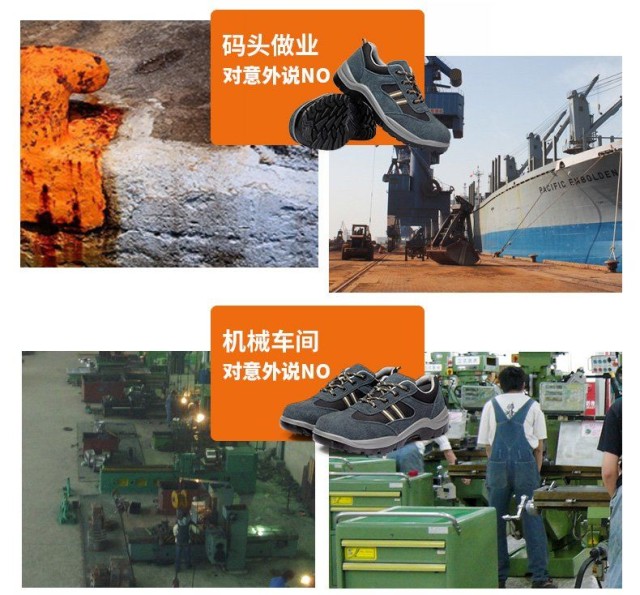Workplace safety isn't negotiable—especially when it comes to protecting workers' feet from crushing impacts, electrical hazards, and punctures. ASTM International's rigorous testing protocols, particularly the F2413 standard, provide a globally recognized framework for safety footwear that mitigates these risks. This article explores how ASTM standards compare to global benchmarks, their real-world impact on injury reduction, and emerging innovations in protective footwear.
The Role of ASTM International in Safety Footwear
ASTM International sets the gold standard for safety footwear through F2413, a specification that mandates rigorous testing for:
- Impact resistance (75 lbs of force applied to the toe area)
- Compression resistance (withstands up to 2,500 lbs of pressure)
- Electrical hazard protection (insulation against shocks up to 18,000 volts)
- Puncture resistance (tested with a 120-lb force on a sharp object)
Unlike regional standards (e.g., Europe’s EN ISO 20345), ASTM F2413 is widely adopted in North America and harmonizes with global requirements, making it a versatile choice for multinational employers.
Why does this matter?
- Compliance assurance: Meets OSHA and CSA regulations.
- Global applicability: Aligns with ISO and EN standards for export-ready footwear.
- Worker trust: Third-party testing ensures consistent quality.
ASTM vs. Global Standards: ISO, EN, and Regional Certifications
While ASTM F2413 dominates in the U.S. and Canada, other regions rely on:
- EN ISO 20345 (Europe): Requires toe protection against 200 joules of impact energy.
- AS/NZS 2210.3 (Australia/New Zealand): Includes slip-resistance testing on wet surfaces.
Key differences:
- ASTM’s electric hazard tests are stricter than ISO’s.
- EN standards mandate slip resistance (e.g., tested on wet quarry tile with a 0.40+ friction coefficient), while ASTM addresses it separately under F2913.
For brands like 3515, which serve global distributors, designing footwear that meets both ASTM and EN ISO standards ensures market flexibility and worker safety across borders.
Case Studies: Reducing Workplace Injuries with ASTM-Compliant Footwear
Data from industrial sites shows:
- A 40–60% reduction in foot injuries after switching to ASTM F2413-compliant boots.
- Fewer compensation claims linked to toe fractures or puncture wounds in construction and oil/gas sectors.
Example: A Canadian mining company reported zero foot injuries in 12 months after replacing older boots with ASTM-certified footwear featuring puncture-resistant soles.
Future Trends: Smart Safety Footwear and ASTM’s Evolving Protocols
Emerging technologies are pushing ASTM to adapt:
- Embedded sensors: Detect hazardous gases or excessive force, alerting workers via apps.
- Self-cleaning soles: Enhance slip resistance in oily conditions (a key focus of ASTM F2913).
- Lightweight materials: Carbon fiber toes meet ASTM impact requirements while reducing fatigue.
The next frontier? ASTM is drafting guidelines for "connected footwear" to integrate IoT capabilities without compromising safety.
Protect Your Workforce with 3515’s ASTM-Certified Footwear
As a leading manufacturer for distributors and bulk buyers, 3515 delivers safety footwear that meets ASTM F2413, EN ISO 20345, and regional standards—ensuring compliance and reducing workplace risks. Request a catalog today to explore our range of high-performance boots designed for heavy industry, construction, and electrical work.
Because safety shouldn’t be a compromise—it should be a guarantee.
Related Products
- Wholesale Durable Safety Boots Manufacturer Customizable Steel Toe Work Boots
- Wholesale Durable Breathable Safety Boots Custom OEM Manufacturer
- Durable Steel Toe Safety Boots Wholesale & Custom Manufacturing
- Customizable Anti-Smash Safety Boots for Wholesale & Private Label Manufacturing
- Wholesale Leather Safety Boots with Customizable Protective Toe
Related Articles
- How to Choose Between Steel and Composite Toe Boots for Maximum Safety
- Steel Toe Boots vs. Modern Alternatives: Making the Right Safety Choice
- How Safety Standards for Steel Toe Boots Protect Workers Beyond Impact Resistance
- How to Choose Safety Footwear for Electrical Hazard Jobs: Steel Toe vs. Composite Toe
- Steel Toe Work Boots: Balancing Safety and Comfort for Demanding Jobs




















